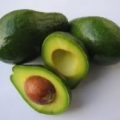In today’s environment, when there is an increasing emphasis on healthy eating and supporting local companies, selling produce that was grown at home has arisen as a feasible possibility for many people to start their businesses. The transformation of your fruits and vegetables into a source of income takes meticulous planning and execution, regardless of whether you have a backyard garden or a huge agricultural operation. To assist you in successfully navigating this venture, the following are six specific tips that will help you get started on your trip into the world of selling fresh produce.
Acquire A Complete Understanding of Your Market
Take the time to undertake in-depth market research before you even consider the possibility of selling your produce. Acquire an understanding of the demographics, tastes, and purchasing patterns of the potential clients you have. Are you aiming to attract people who are especially concerned about their health, families who are looking for fresh products, or perhaps local chefs who are looking for premium ingredients? Gaining insights into your market allows you to customize your products and services as well as your marketing methods to suit the requirements of your target audience effectively.
Deal With the Requirements of the Regulations
When selling produce grown at home, it is necessary to comply with a variety of regulations and requirements, notably those about the labeling and safety of food consumption. Make sure you are familiar with the local regulations that govern the selling of agricultural products, including any permissions or certificates that may be required. To guarantee that your clients are satisfied with the quality and safety of your produce, you might be required to obtain certifications such as organic or Good Agricultural Practices (GAP) certification, depending on where you are located and who your target market is.
Invest In Packaging of the Highest Quality
The presentation of your fruit and its ability to be preserved are both significantly impacted by the packaging chosen. If you are looking for alternative options for packaging, you can make an investment in fresh food packaging solutions that not only safeguards your fruits and veggies but also serves to improve their aesthetic appeal. To satisfy the ever-increasing need for environmentally responsible behaviors, you can take into consideration eco-friendly alternatives such as reusable containers or biodegradable bags. This can create confidence in customers and separate your products from those of your competitors. Labeling that is both clear and informative, detailing the variety, origin, and growing methods, can be of great assistance.
Investigate A Wide Range Of Selling Channels
You can’t restrict yourself to just one marketing channel; rather, you can investigate several alternative options to communicate with various subsets of your target market. There are a variety of alternative channels through which you might sell your produce, including but not limited to farmers’ markets, community-supported agriculture (CSA) programs, roadside stalls, internet marketplaces, and partnerships with local merchants or restaurants. To identify which channels are the most appropriate for your company, you need to evaluate each choice based on several aspects, including reach, cost, and the feasibility of logistics.
Build Strong Customer Relationships
The establishment and maintenance of ties with one’s clientele is critically important for achieving sustained success. To collect feedback, offer advice, and share updates about your farm, you can interact with them at farmers’ markets, over social media, or through email newsletters. It is possible to cultivate a sense of trust and loyalty among your consumer base by providing them with samples, ideas for recipes, and educational content regarding farmers’ environmentally responsible methods. It is possible to transform casual customers into devoted advocates for your business using positive encounters and unique experiences.
Diversify Your Product Offerings
Even though it is essential to concentrate on your primary crops, you can also think about expanding your product line to satisfy a variety of preferences and tastes. Your extra produce could be used to make value-added items such as jams, sauces, or dried herbs. Investigate the idea of supplying these products to customers. You can also think about cultivating seasonal specials or specialized items, as they can help you differentiate yourself from other businesses in your industry and attract a larger audience. When you diversify your business, you not only boost the potential for your revenue, but you also extend the selling season and reduce the risk of relying entirely on a single product.
Conclusion
When you decide to sell the food that you have produced at home, you are embarking on a path that is full of both opportunity and obstacles. Take satisfaction in sharing the fruits of your effort with your community while contributing to a food system that is healthier and more sustainable. Embrace the process, be flexible in the face of changing circumstances, and the sense of accomplishment that comes from doing so.






